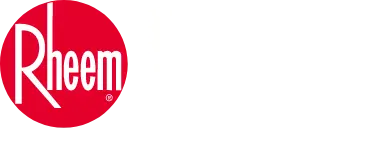



1920s
Richard and Donald Rheem, with financial help from brother William, formed a co-partnership and the Pacific Galvanizing Company to galvanize steel drums and other metal products on June 20, 1925, in Emeryville, California.





The plant was enlarged to house Rheem Manufacturing Company and began manufacturing steel drums.
1930s
Rheem Manufacturing Company was incorporated on January 22, 1930, acquiring the assets of the two co-partnerships, as well as those of the Republic Steel Package Company of California. This purchase gave the company a plant in Richmond, California, and a broader product line including boilers and tanks.





Rheem moved the Emeryville operations to Richmond. The Richmond plant was Rheem Manufacturing Company’s headquarters for many years.
For the first time, Rheem offered its common stock to the public through a syndicate headed by Blyth & Co., Inc., and Greenwood-Raggio & Co. Until then, the company was owned entirely by the original founders.





Rheem opened its first plant overseas in Sydney, Australia, manufacturing shipping containers and household appliances.
1940s
Rheem was involved mostly with wartime production throughout the early 1940s.






By the end of war, Rheem sales went from $10 million in 1940 to more than $90 million in 1945. Seven plants received Army-Navy “E” awards and several renewal stars for outstanding excellence in production. Rheem’s Birmingham and New Orleans plants won the U. S. Safety Award from the U.S. Department of Labor for outstanding safety records reducing accidents 84 percent and 72 percent, respectively.
With a shift in emphasis from industrial to consumer markets after the war, the company launched its first extensive national advertising program of household appliances to gain consumer awareness of Rheem products and its name.






Rheem resumed its overseas expansion opening two plants in Brazil.
Foreseeing a future for central heating and air conditioning systems, Rheem purchased Frazer line of gas furnaces and winter air conditioners.


1950s



Rheem developed the “Rheemcote” lithography process that allowed the use of multicolor designs and messages on the containers.
Rheem added fiber and steel-fiber drums to its container line.





Developed glass-lining which was the bonding of porcelain lining to the inner surface of the water heater tank. It was the greatest boon in the industry to extending water heater tank life.
The company introduced the “Rheemaire” central air conditioning and heating system for homes with the exclusive patented Air-Film principle making it the most efficient unit available at the time.




Rheem developed the Centrifugal Lining Method, which automatically sprayed a coating on the interior wall of pails and drums using centrifugal force. Since the process used no air, pinholes and blisters in the lining were eliminated.
1960s
Rheem added fiber and steel-fiber drums to its container line.





Developed glass-lining which was the bonding of porcelain lining to the inner surface of the water heater tank. It was the greatest boon in the industry to extending water heater tank life.
The company introduced the “Rheemaire” central air conditioning and heating system for homes with the exclusive patented Air-Film principle making it the most efficient unit available at the time.




Rheem developed the Centrifugal Lining Method, which automatically sprayed a coating on the interior wall of pails and drums using centrifugal force. Since the process used no air, pinholes and blisters in the lining were eliminated.

